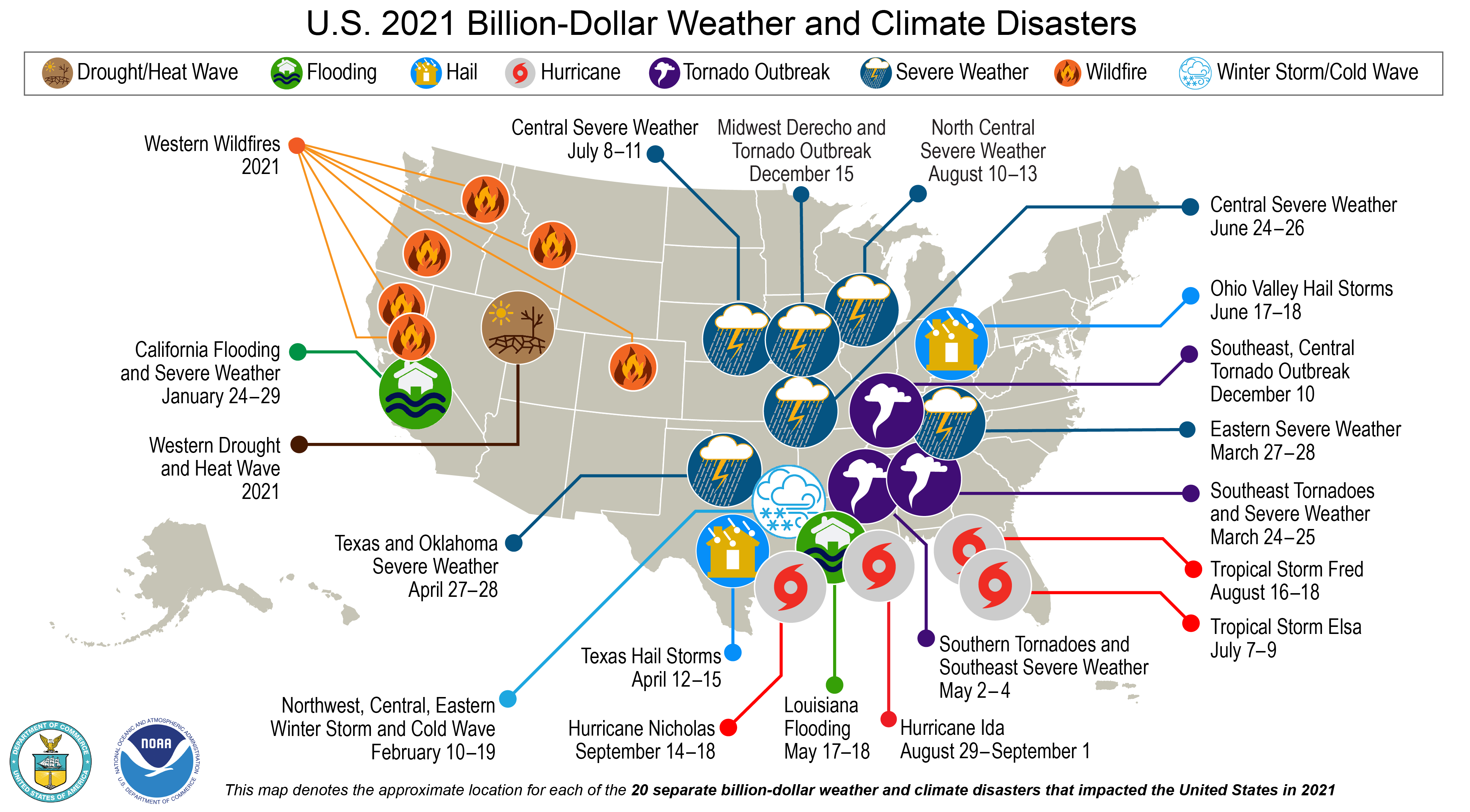Every year the National Oceanic and Atmospheric Administration (NOAA) reports the number of weather and climate disaster events where overall damage costs exceed $1 billion. In it’s latest accounting, NOAA found that the United States experienced 20 separate billion-dollar climate and weather disasters in 2021. The damages from these 20 costly disasters totaled $145 billion—with just four tropical storms accounting for over half that total price tag.
From severe storms and flooding to drought and wildfires, billion-dollar disasters killed 688 people across the United States last year alone.
Adjusted for inflation, 2021 was the third costliest extreme weather year on record. Billion-dollar weather and climate disasters have grown steadily since the 1980s, when there was an average of 3 disasters a year with damages exceeding $1 billion. In the last five years, that’s climbed to an average of 17 a year, causing a total of $742 billion in damages and killing nearly 5000 people.

Scientists have repeatedly warned that global warming increases the frequency and severity of extreme weather events, which will become more deadly and costly. People of color and low-income communities in the United States and around the world are disproportionately harmed as decades of inaction stretch on.
NOAA’s new report comes out as the Biden administration attempts to salvage some of the climate provisions from it’s floundering Build Back Better agenda. Although only a fraction of what’s needed, the bill includes the country’s largest ever climate investment. It also comes on the heels of a Senate vote to approve a $778 billion military spending budget—four times the annual cost of the entire Build Back Better plan.
And while politicians across party lines haggle over the “costs” of climate action, the financial costs of prolonging inaction are all too often left out of the equation. Climate scientist Daniel Swain calls the costs of not solving the climate crisis, “incalculably large.” By one estimation, inaction on climate change could cost up to 15.7% of GDP per year—equivalent to wiping out $3.3 trillion from the U.S. economy. Regardless of the specific price tag, there is clear consensus around the need for “early and coordinated action.” Acting on climate in 2022 isn’t “early” by any reasonable standard, but with the clock ticking there’s no time like the present.
To be clear, we shouldn’t take action on climate to save money. We should invest in transformative climate solutions to improve the lives of people around the world, to prevent needless harm to Black, Indigenous, people of color, and low-income communities on the frontlines of the climate crisis, and to be in right relations with the Earth and with each other.
At the same time, we have to challenge the tired excuse that we “can’t afford” transformative climate investments when we’re already paying the price for inaction. We can’t ignore the fact that there’s always more money for the military, war, and violence, and yet we’re told we can’t afford to invest in the infrastructure of care we need to actually keep our communities safe.
The bottom line is: we will pay for climate change one way or the another. We can invest in a reparative, life-affirming future now—or we can pay the growing costs of inaction.
